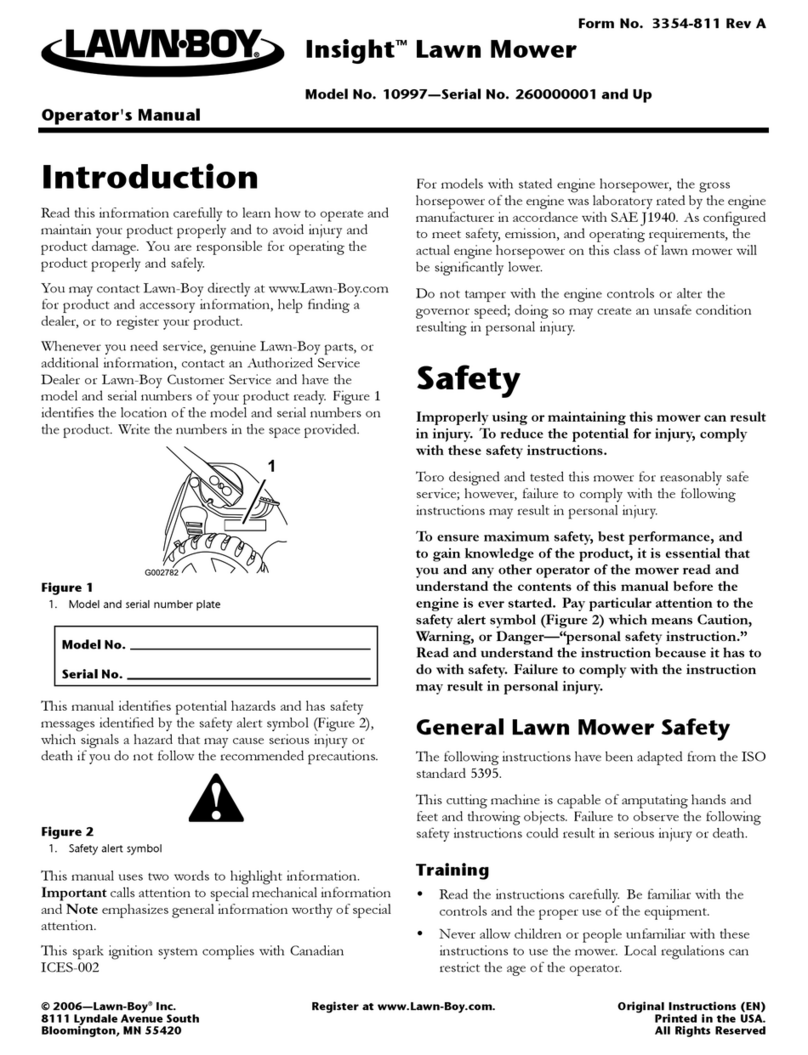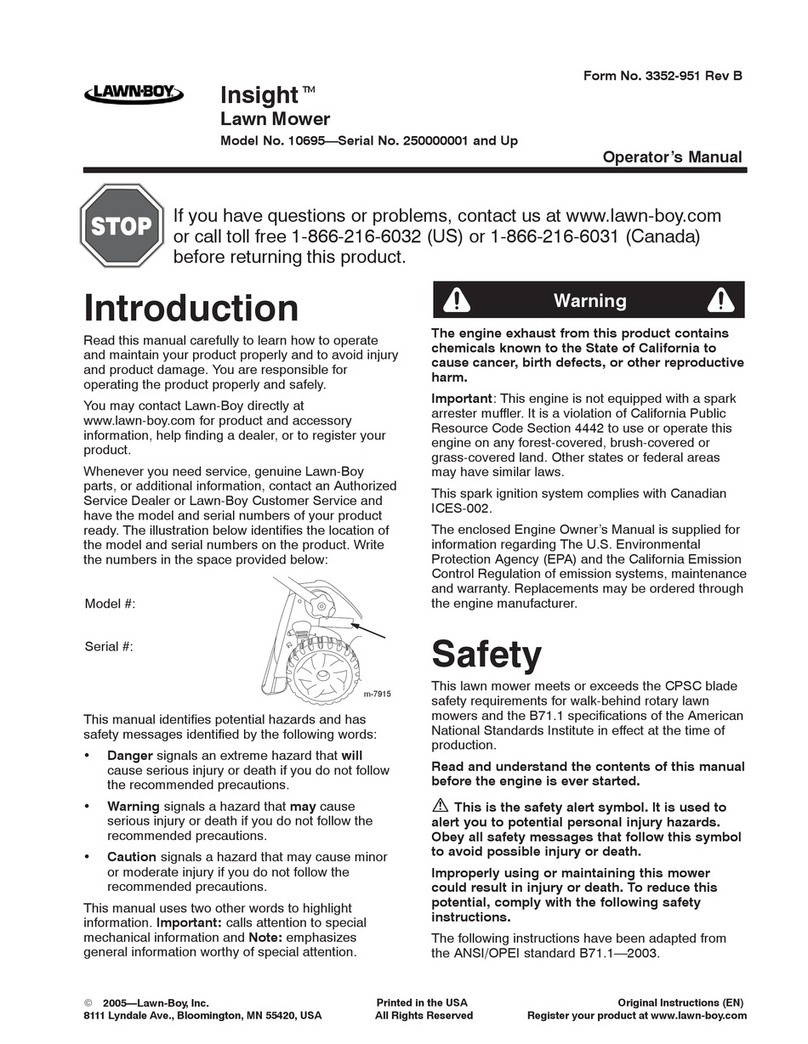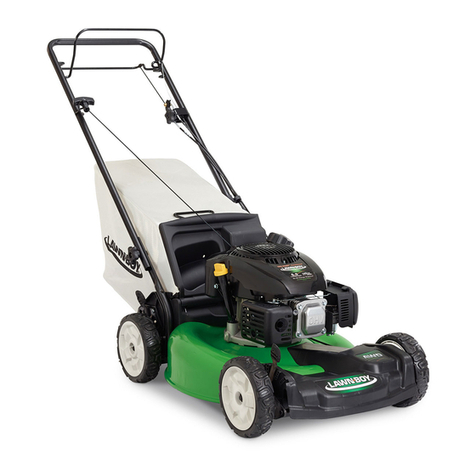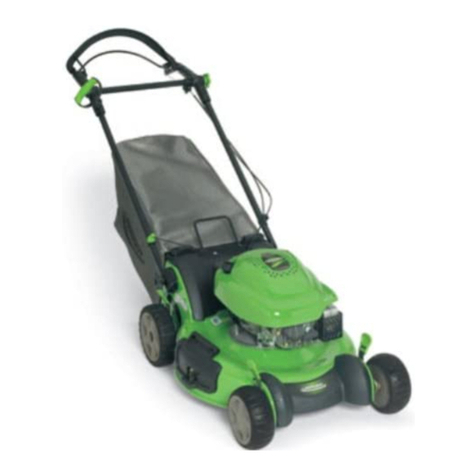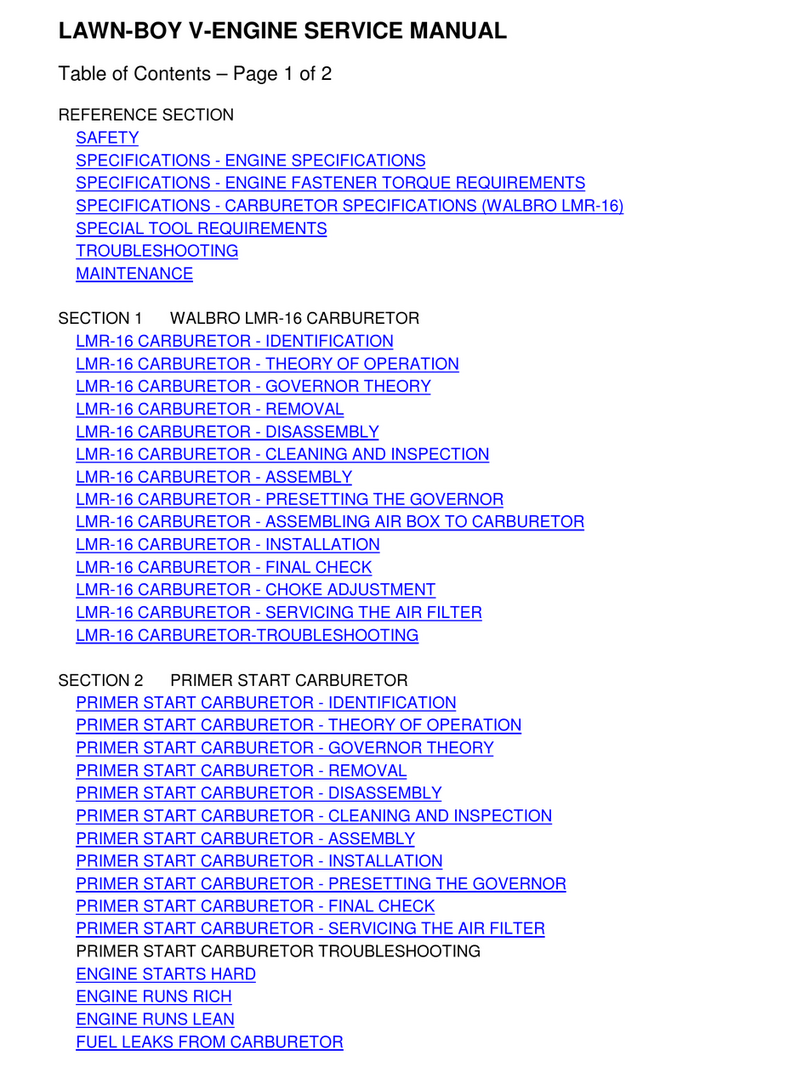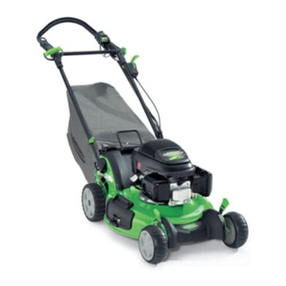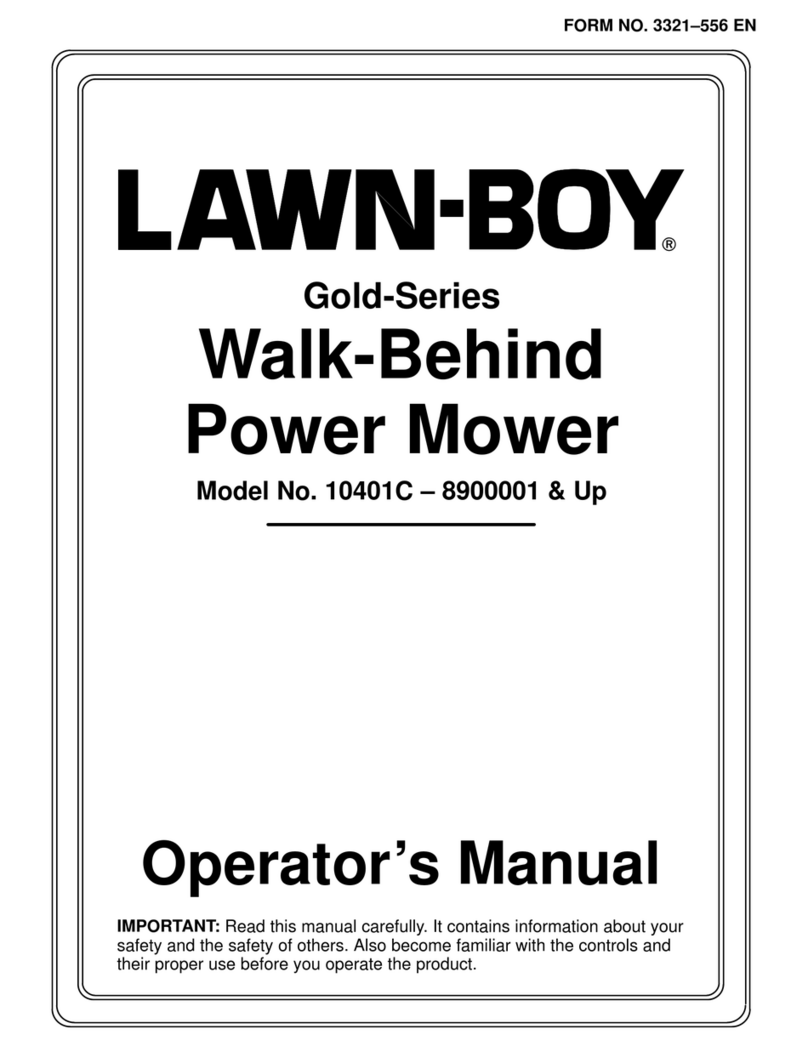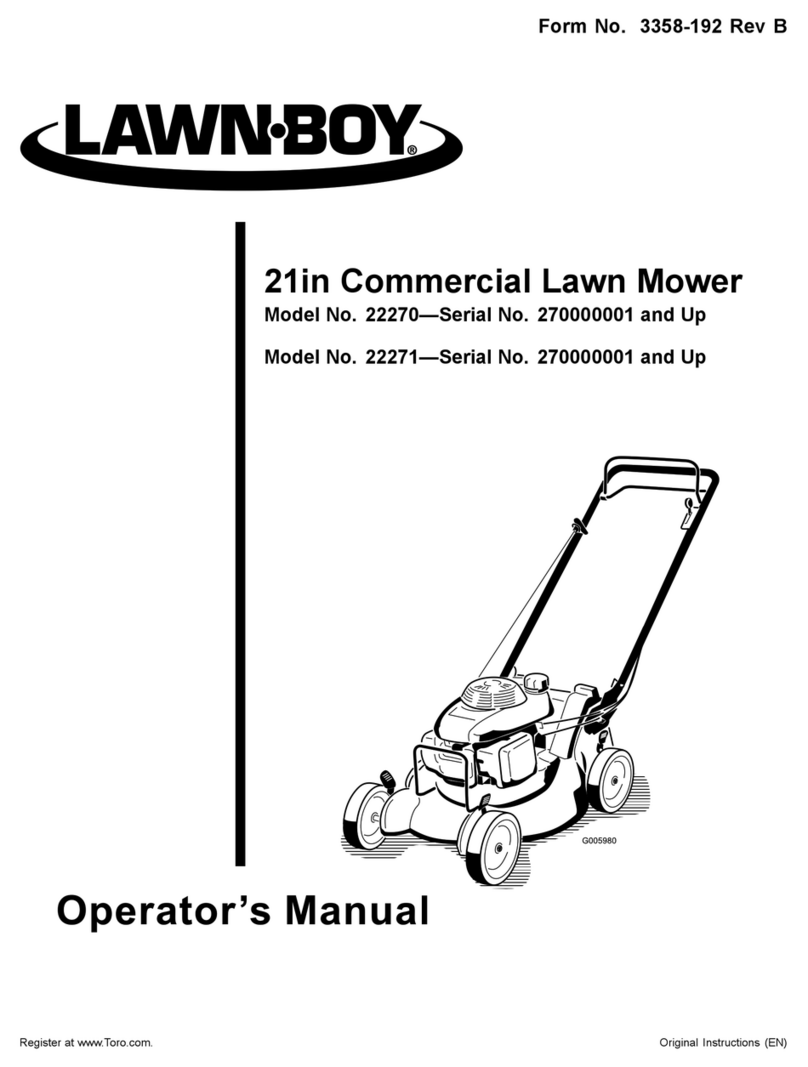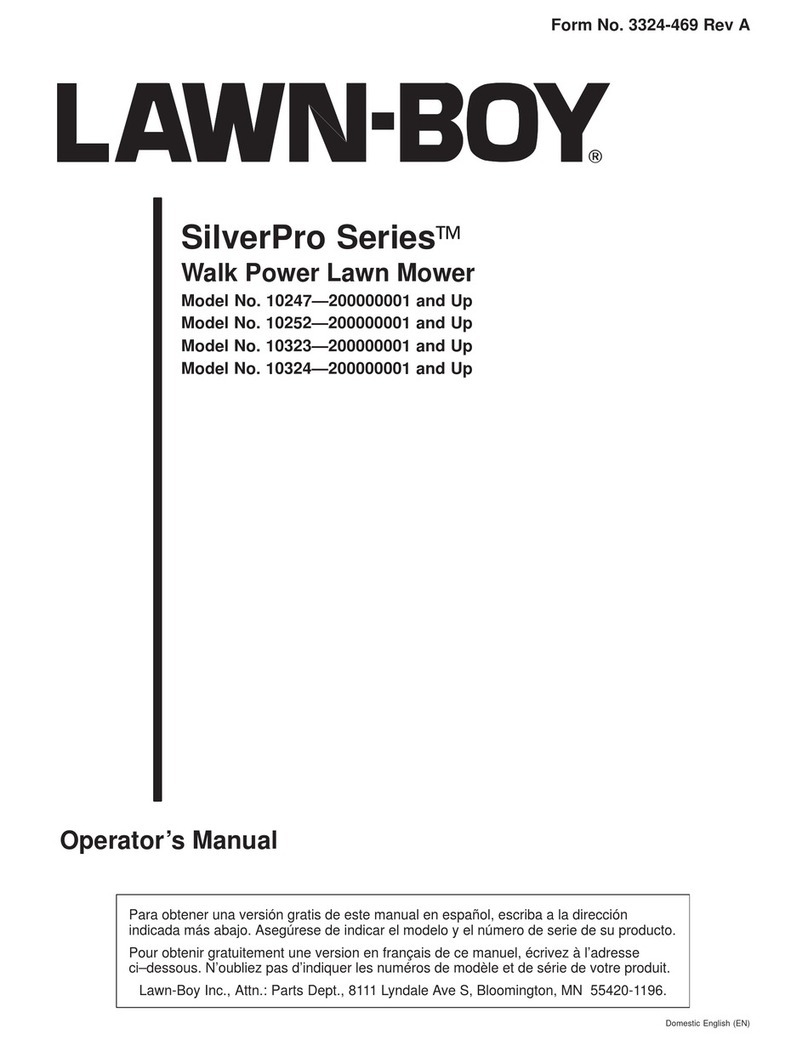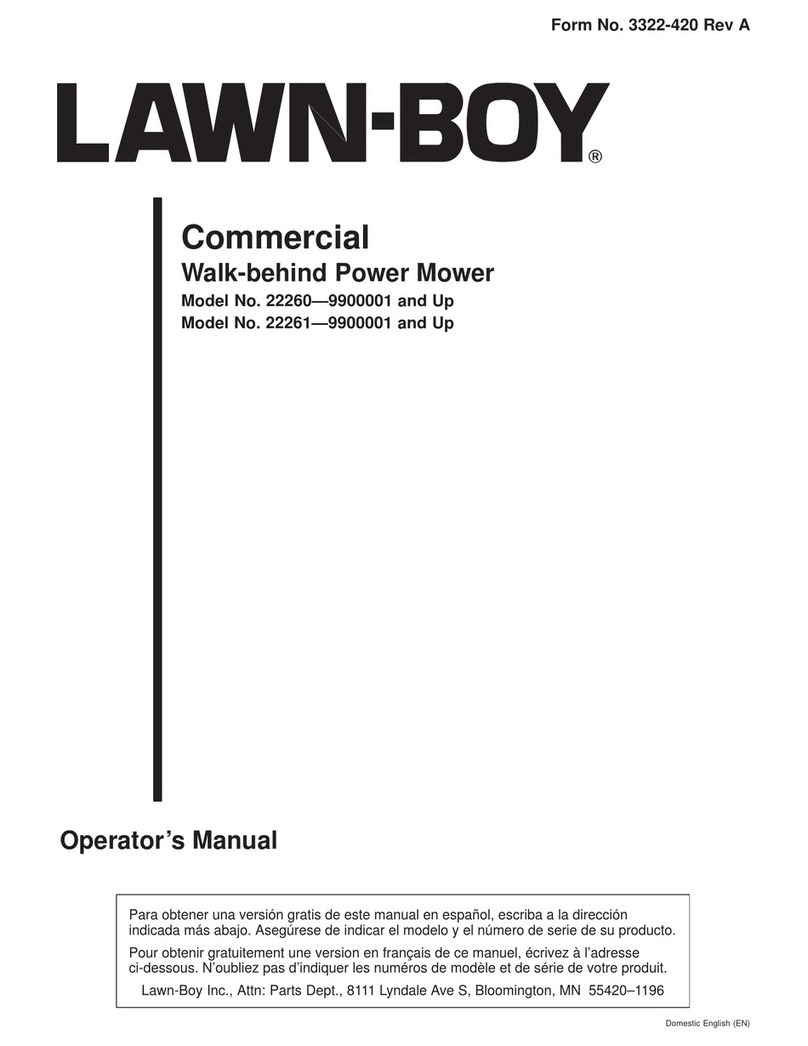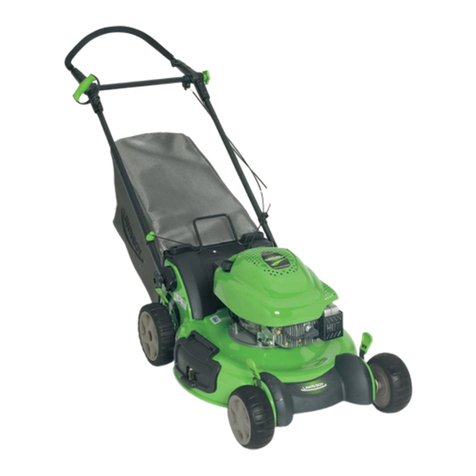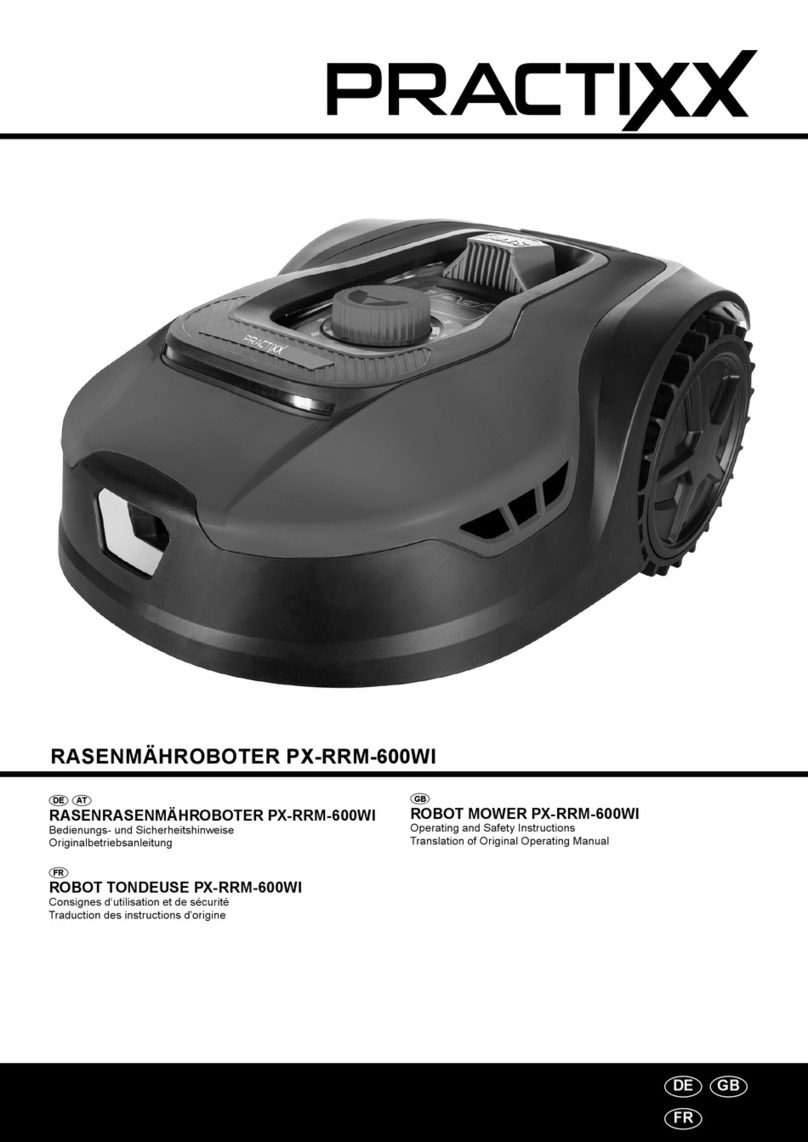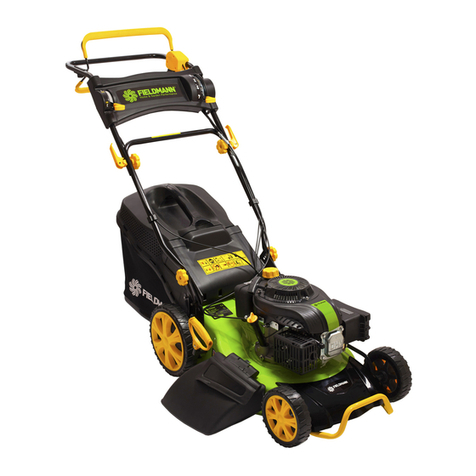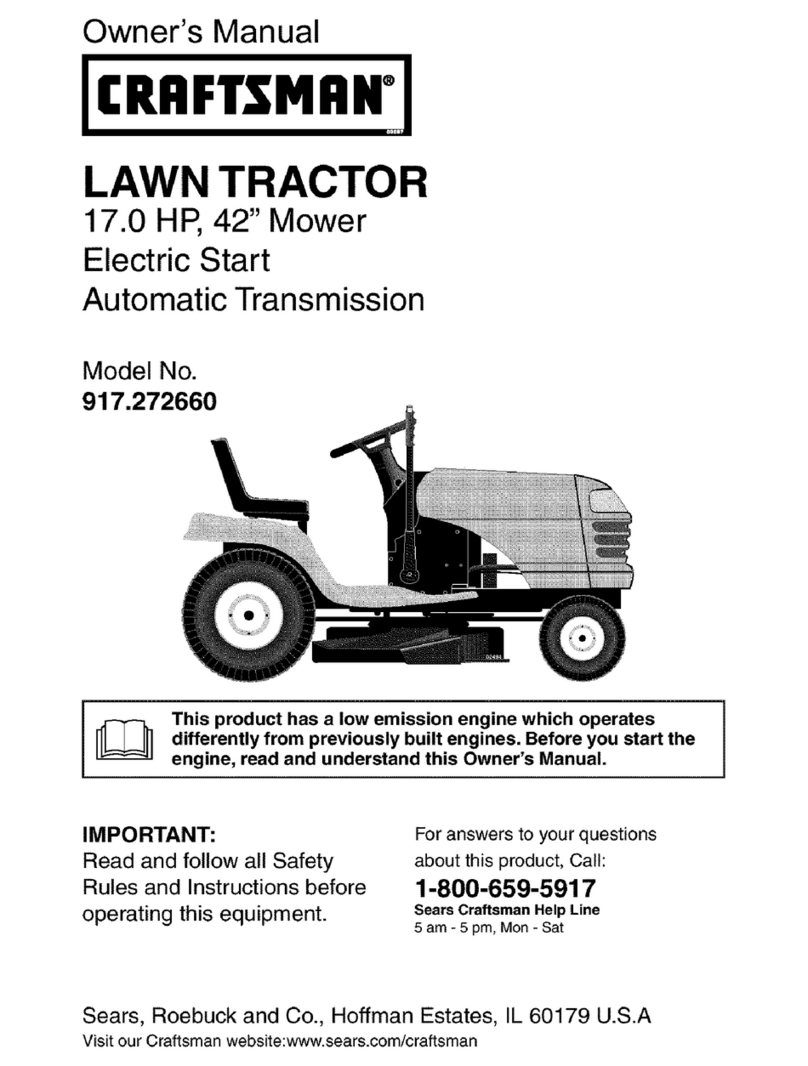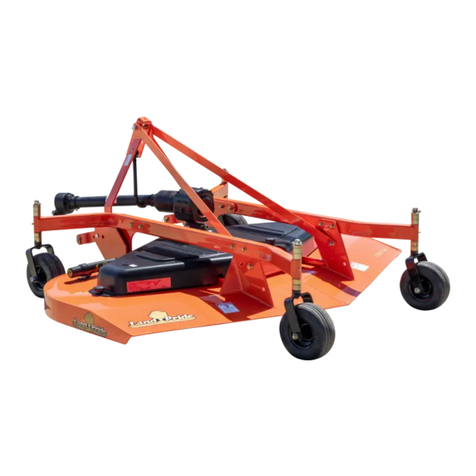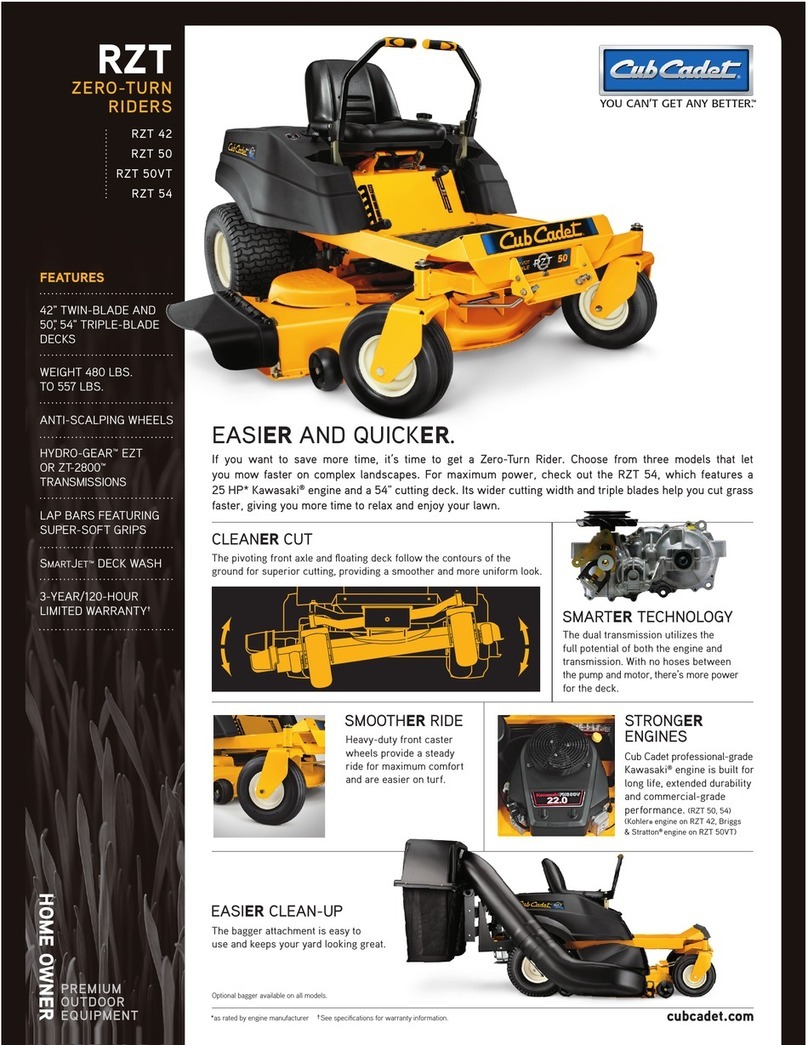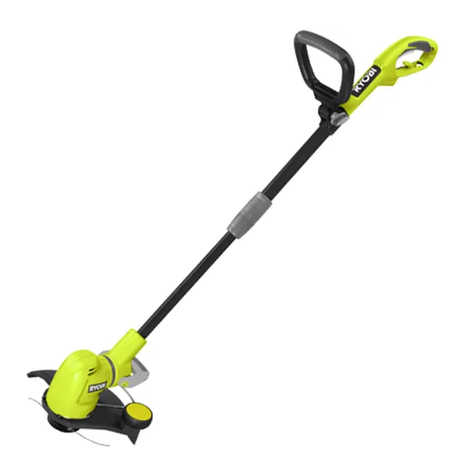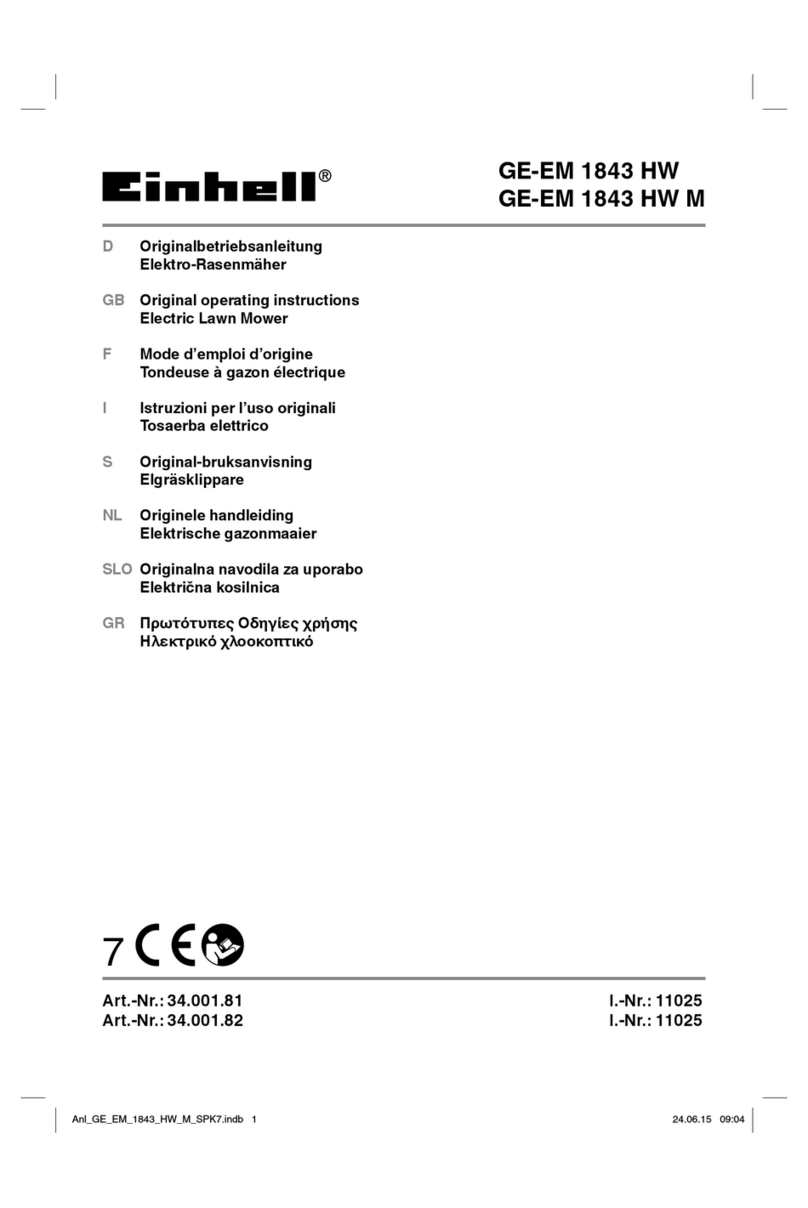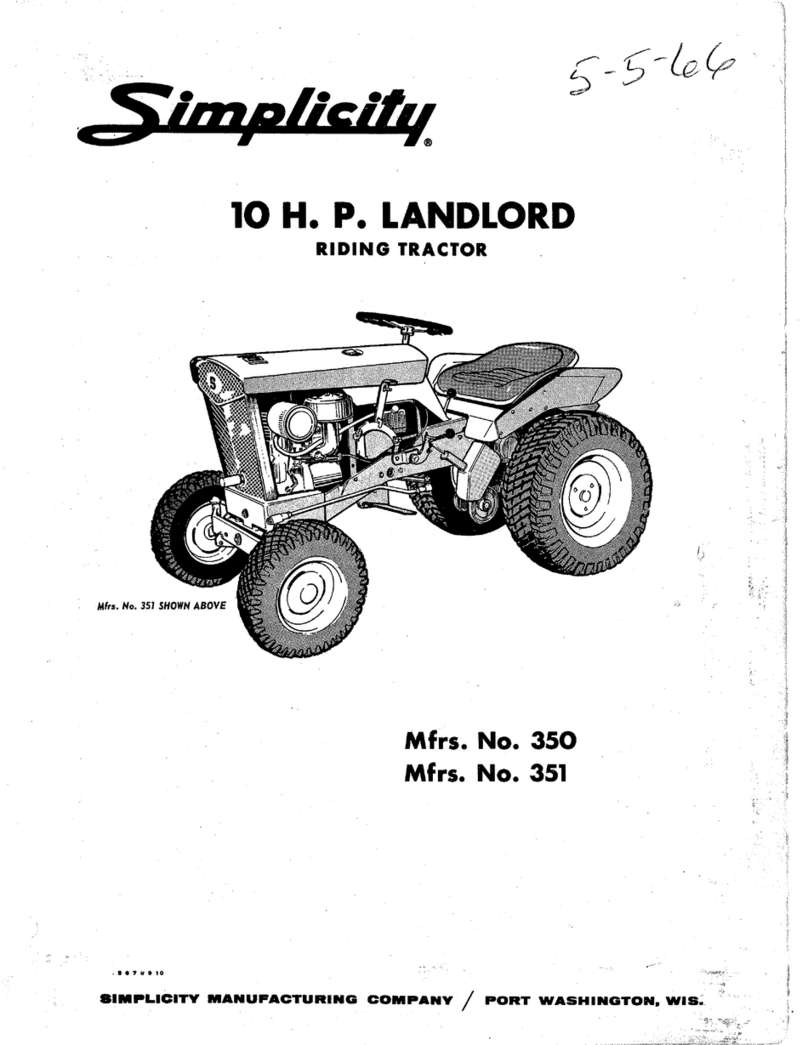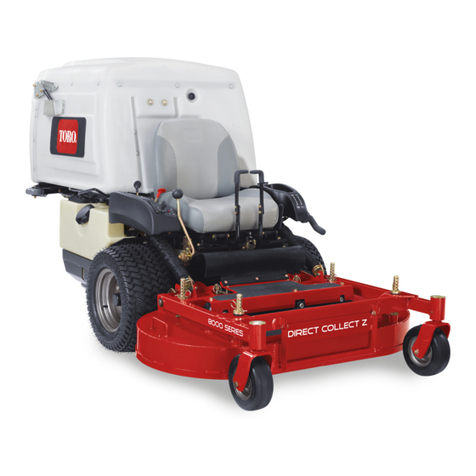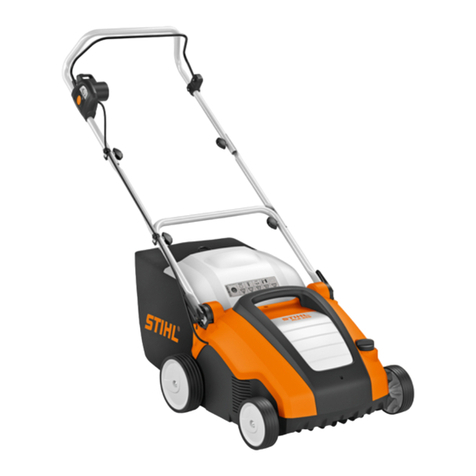
4
B.
Fill fuel tank outdoors, not indoors.
NEVER ADD
FUEL T
O AN ENGINE THA
T IS RUNNING
OR HOT
.
C.
Install gas cap on fuel container and gas tank, and
wipe up any spilled gasoline before starting engine.
9.
Before using, always visually inspect to see that the
blades, blade bolts and cutter assembly are not worn or
damaged. Replace worn or damaged blades and bolts
in sets to preserve balance.
While Operating
1. Do
not run engine indoors.
2.
Do not upend mower when starting engine. If
necessary
, tilt mower so that blade points away from
operator and bystanders.
3.
Start the engine carefully according to instructions and
with feet well away from the blade.
4.
Always maintain secure footing. Keep a firm grip on
the handle and walk; never run. Never operate mower
in wet grass. Mow only in daylight or in good artificial
light.
5.
Mow across the face of slopes; never up and down.
Use extreme caution when changing direction on
slopes. Do not mow excessively steep slopes. W
ear
skid resistant shoes on slopes.
6.
Always wear safety glasses or eye shields during
operation to protect eyes from foreign objects that may
be thrown from the machine.
7.
Keep face, hands, and feet away from the mower
housing and cutter blade when the engine is running.
Blade can cause injury to hands and feet.
8.
Use extreme caution when reversing or pulling the
mower toward you.
9.
Stay behind the handle until the engine stops and keep
clear of dischar
ge opening at all times.
10.
When bagging grass, stop engine and stay behind
handle until all moving parts stop before removing and
emptying bag.
11.
When mowing, ensure grass bag or mulch plate is
installed over discharge opening.
12.
Shut engine of
f and stay behind handle until all
moving parts stop before unclogging chute.
13.
Since the blade rotates for a few seconds after the
blade control bail is released, stay behind the handle
until all moving parts stop.
14.
After striking a foreign object or if mower vibrates
abnormally
, stop engine and remove wire from spark
plug. Check mower for damage and make all repairs
before using mower again. If major repairs are ever
needed or if assistance is desired, contact your local
Authorized Lawn-Boy Service Dealer
.
15.
Stop the engine and wait for all moving parts to stop
before adjusting the height-of-cut.
16.
Stop the blade when pushing the mower outside the
lawn area.
17.
Stop engine before leaving the operator
’
s position —
behind the handle. Disconnect wire from spark plug if
mower will be unattended.
18.
Do not touch engine while it is running or shortly after
it is stopped because engine will be hot enough to
cause a burn.
19.
If mower must be lifted to be transported, turn of
f
engine and stay behind the handle until all moving
parts stop.
Maintenance
1.
Perform only those maintenance instructions described
in this manual. If major repairs are ever needed or if
assistance is desired, contact your local Authorized
Lawn-Boy Service Dealer
.
2.
Before mower is cleaned, inspected, serviced, or
adjusted, stop engine and disconnect wire from spark
plug. Keep wire away from plug to prevent accidental
starting.
3. T
o assure the mower is in safe operating condition,
frequently check and keep all nuts, bolts, and screws
tight. Assure blade nut is tightened to 560 in.–lbs.
(47 ft.–lbs.) (63 N
m).
4.
When servicing blade, refer to blade maintenance
section for correct installation and servicing
procedures.
5. T
o reduce fire hazard, keep engine free of excessive
grease, grass, leaves, and accumulations of dirt.
6.
Do not overspeed the engine by changing governor
settings.
7.
Check grass catcher bag frequently for wear or
deterioration. Replace with a new bag when worn or
damaged for your protection.
8.
Allow engine to cool before storing mower in any
enclosure. Do not store mower near any open flame or
where gasoline fumes may be ignited by a spark.
9.
At the time of manufacture, the mower conformed to
the safety standards in ef
fect for rotary mowers. T
o
ensure best performance and continued safety
certification of the mower
, use genuine Lawn-Boy
replacement parts and accessories. Replacement parts
and accessories made by other manufacturers may
result in nonconformance with the safety standards,
and that could be dangerous.























